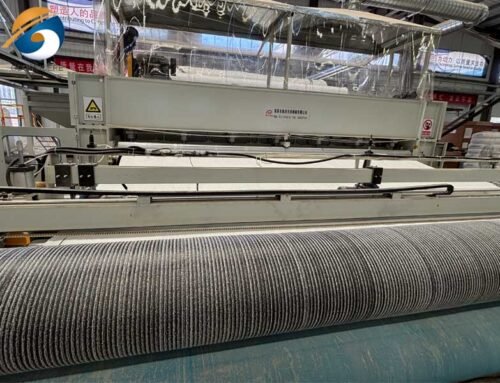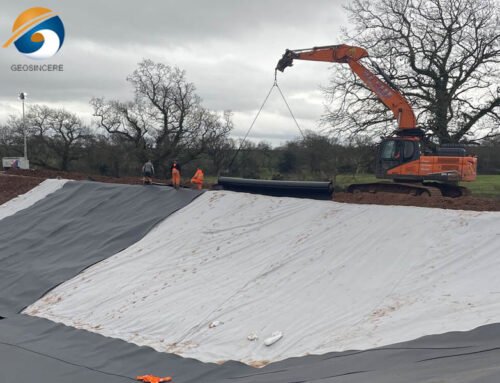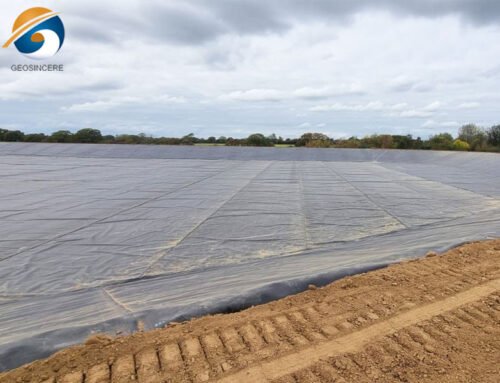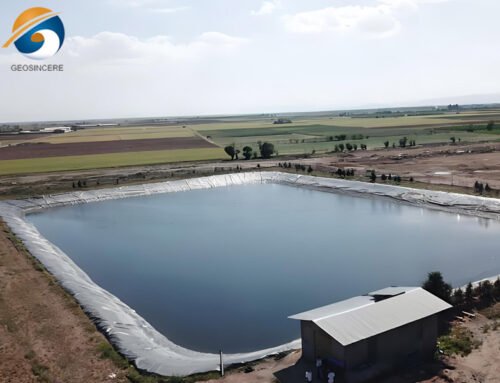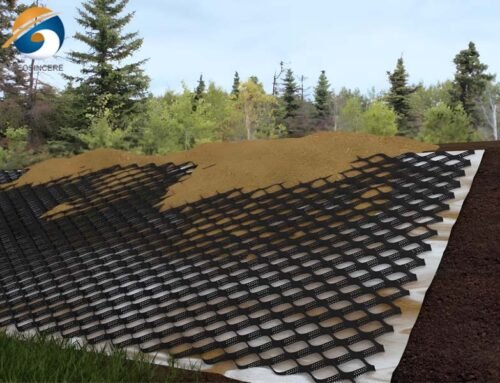In the field of geosynthetics, HDPE liners have become one of the most widely used materials for waterproofing, anti-seepage, and environmental protection projects. They are commonly applied in landfills, mining projects, aquaculture ponds, reservoirs, canals, and various containment structures. However, an HDPE liner alone cannot guarantee complete sealing and durability. The installation quality—especially the welding of liner seams—determines the long-term performance of the whole project.This is where the HDPE liner welding machine plays a critical role. For professionals in geotechnical engineering, construction contractors, and project owners, understanding what an HDPE liner welding machine is, how it works, and how to select the right one is essential for project success. As a global supplier of geosynthetics, GEOSINCERE not only provides premium geomembranes but also offers complete technical support on welding equipment and installation guidance.In this article, we will give you a comprehensive explanation of HDPE liner welding machines—from definition, working principle, types, applications, to selection guide—so that you can fully understand why it is indispensable for every geomembrane project.
1. What Is An HDPE Liner Welding Machine?
An HDPE liner welding machine is a specialized piece of equipment designed to join two overlapping HDPE geomembrane sheets into a continuous, leak-proof, and durable seam. Unlike ordinary plastic sealing tools, this machine uses heat fusion technology or extrusion welding to ensure the liner sheets bond at a molecular level.
In practical terms, the welding machine ensures that the installed HDPE geomembrane performs as a single continuous barrier, rather than as multiple sheets with weak points at the overlaps.
Key features:
Designed specifically for HDPE (High-Density Polyethylene) liners, though often compatible with LDPE, LLDPE, PVC, and other geomembranes.
Works under field construction conditions, meaning it must be durable, portable, and adaptable to temperature, wind, and terrain challenges.
Produces seams that meet international standards such as ASTM D4437, GSI GM19, or local construction codes.
In short, without a welding machine, even the best HDPE liner cannot guarantee the required anti-seepage performance.
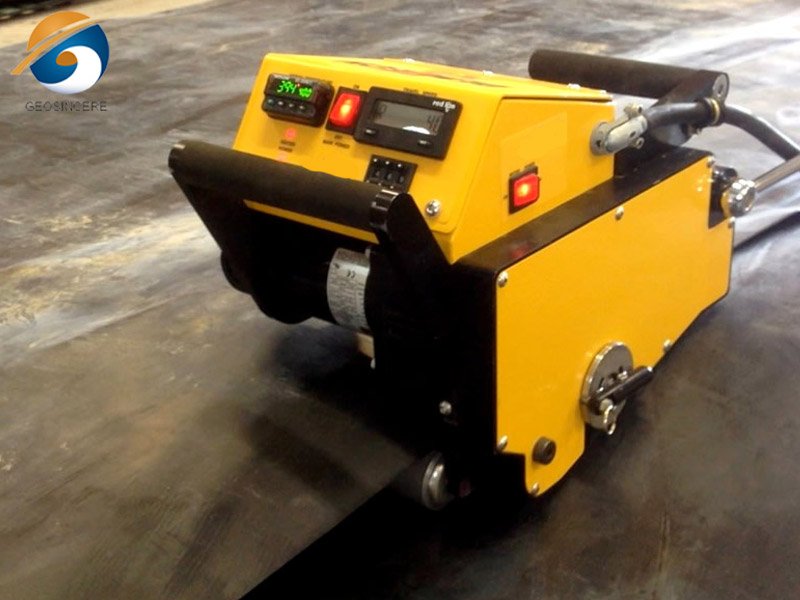
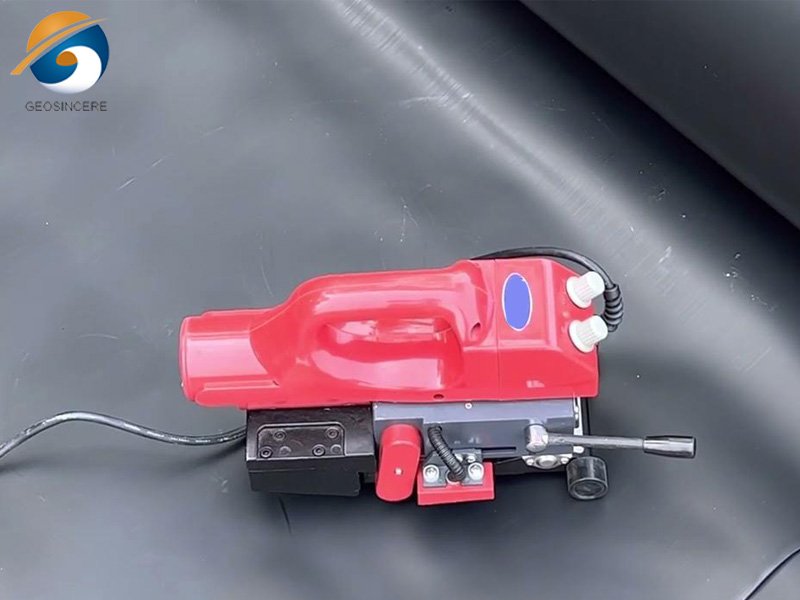
2. Why is Welding Important for HDPE Liners?
The effectiveness of an HDPE liner system depends 80% on installation quality, especially seam welding. Poor welding can lead to:
- Leakage of contaminants in landfills or tailing ponds.
- Water loss in reservoirs, canals, or ponds.
- Shortened lifespan of the liner due to seam failure.
- Professional welding using the correct machine ensures:
- Waterproofing & anti-seepage reliability.
- Mechanical strength equal to or stronger than the original liner sheet.
- Chemical resistance maintained across the seam.
- Longevity, matching the 20–30 years service life of high-quality HDPE liners.
That is why international projects strictly require certified equipment and trained operators for HDPE liner welding.
3. Types of HDPE Liner Welding Machine
HDPE liner welding machines can be broadly divided into two categories:
3.1 HDPE Liner Welding Machine – Hot Wedge Welding Machine
Working principle: A heated wedge slides between two overlapping HDPE sheets, melting the contact surfaces. Pressure rollers then press them together, forming a dual-track seam with an air channel in between.
Advantages:
- High efficiency, suitable for large-scale projects.
- Strong and uniform welds.
- Dual-track design allows for air pressure testing of seams.
- Applications: Landfills, mining pads, reservoirs, canals, highways.
- Typical welding speed: 2–5 meters per minute.
3.2 HDPE Liner Welding Machine – Extrusion Welding Machine
Working principle: A plasticized HDPE welding rod is extruded into the gap between liner sheets, bonding them with pressure.
Advantages:
- Ideal for complex areas, corners, vertical surfaces, and repairs.
- Provides a thick weld bead for extra strength.
- Applications: Pipe penetrations, slopes, repairs, and patching works.
- ypical welding thickness: 3–5 mm weld bead.
In real-world projects, both machines are used together:
- Hot wedge welders handle long straight seams.
- Extrusion welders deal with details and special structures.
4. Working Principle of an HDPE Liner Welding Machine
HDPE liner welding machines operate based on the properties of thermoplastic materials, achieving molecular-level bonding through heating to a molten state followed by pressure application.
The working process can be divided into three main stages:
- Heating Stage: The welding machine heats the edges of the HDPE material to a molten state using heating elements. The PID temperature control system employs imported temperature sensors and industrial-grade control chips for more precise and stable temperature regulation. Typical HDPE welding temperatures are adjustable within the 0-450°C range.
- Fusion Stage: While the material is in a molten state, specific pressure is applied to fuse the two sections of material together. The PWM wide-frequency speed control system ensures operation remains unaffected by external power fluctuations, while specially designed high-torque motors enable smoother movement.
- Cooling and Solidification Stage: The molten material cools naturally under maintained pressure, forming a uniform and strong weld seam. The typical welding width is 10cm/15cm, with welding speed adjustable within the 0.5-5m/min range.
This ensures every seam meets the required tensile strength and leak-proof standards.
5. Applications of HDPE Liner Welding Machine
HDPE liner welding machines are indispensable in projects such as:
- Landfills & solid waste containment – Prevent leachate contamination.
- Mining – Heap leaching pads, tailings storage, evaporation ponds.
- Water reservoirs & canals – Prevent seepage and water loss.
- Aquaculture & fish ponds – Maintain water quality and reduce seepage.
- Agricultural irrigation ponds – Improve water efficiency.
- Infrastructure projects – Highway subgrades, tunnels, dams.
In all these cases, welding machines ensure the liner performs as designed.
6. How to Choose the Right HDPE Liner Welding Machine?
When selecting an HDPE liner welding machine, contractors and engineers should consider:
- Material Compatibility – Ensure the machine works with HDPE, LLDPE, or other geomembranes used.
- Thickness Range – Typically 0.5 mm to 3.0 mm HDPE liners.
- Welding Speed – Adjustable speeds help balance efficiency and seam quality.
- Temperature Control – Precision digital controllers ensure consistent fusion.
- Power Supply – 220V or 380V depending on project site.
- Portability & Durability – Lightweight for field use but robust for tough environments.
- Testing Support – Machines with dual-track seams allow reliable air channel testing.
- After-sales Service & Training – Essential for operators to achieve consistent quality.
GEOSINO often advises clients based on their specific project type—whether it is a large mining project in South America or a small aquaculture pond in Southeast Asia—to choose the most suitable welding system.
7. Common Problems & Solutions in Welding
Even with the best machine, issues may arise:
- Incomplete fusion → Usually caused by low temperature or insufficient pressure.
- Burnt material → Caused by excessive temperature or low welding speed.
- Weak seams at overlaps → Incorrect overlap distance or dirty surfaces.
- Wrinkles → Poor alignment or uneven ground surface.
- Solution: Regular calibration, proper operator training, and strict QC.
8. International Standards for HDPE Welding
Most projects follow strict standards to ensure quality:
- ASTM D6392 – Standard test methods for geomembrane seam evaluation.
- GSI GM19 – Guide for geomembrane seam strength.
- ISO 13491 – Geosynthetics sealing systems guidelines.
- Certified welding equipment and trained technicians are often mandatory for government or large-scale projects.
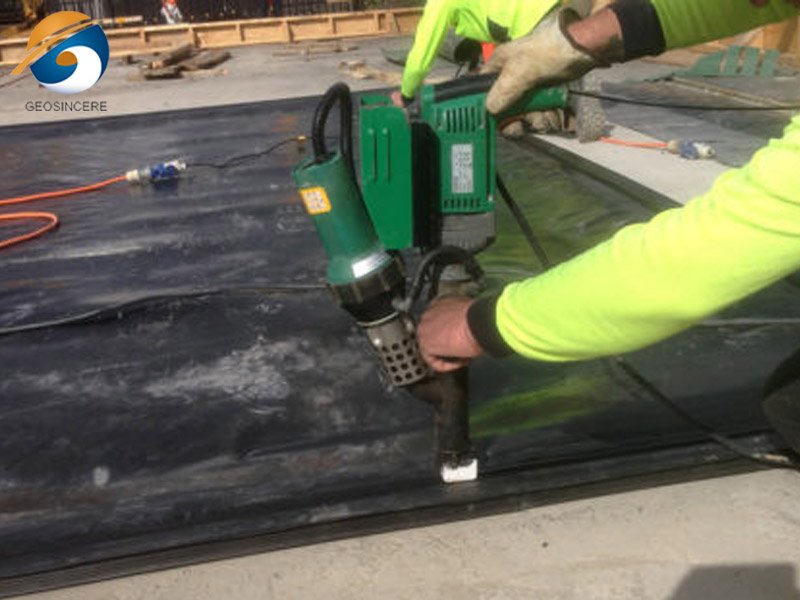

9. GEOSINCERE’s Advantage in HDPE Liner Welding Machine
As a professional geosynthetics manufacturer and exporter, GEOSINO not only supplies high-quality HDPE liners but also provides:
- Technical guidance on welding machine operation.
- Training support for installers.
- Recommendations for welding parameters in different climates.
- Assistance in quality control and seam testing.
We understand that a geomembrane project’s success relies on both materials and installation equipment. That is why we work closely with clients to ensure every seam is secure, every project passes testing, and every investment is protected.
10. Conclusion
The HDPE liner welding machine is not just a tool—it is the key to the long-term performance of every geomembrane installation. By providing strong, leak-proof seams, it ensures that landfills remain environmentally safe, mining operations run efficiently, and water projects conserve resources.
Choosing the right welding machine, combined with proper operator training and strict quality control, guarantees that your HDPE liner will last decades without failure.
At GEOSINCERE, we believe that “a liner is only as strong as its seams.” That’s why we provide not only premium liners but also the expertise and guidance you need for successful welding.
If you are planning a geomembrane project or seeking reliable welding solutions, feel free to contact our team—we are ready to support your project with quality materials, technical know-how, and professional service.

